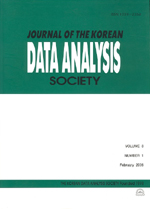Integrating Multiple Perceived Usefulness Constructs into Expectation-Confirmation Model: Focusing on Social Networking Service Use at ‘A’ University in Korea
- 한국자료분석학회
- Journal of The Korean Data Analysis Society (JKDAS)
- Vol.18 No.4
-
2016.081781 - 1796 (16 pages)
- 4

Recently, as a kind of multi-purposes artifact, social networking services have proliferated with deep and wide penetration into our everyday lives. In order to understand why people continue to use social networking service, this study attempts to integrate a set of multiple perceived usefulness constructs into expectation-confirmation theory rather than single overall perceived usefulness. Following the previous studies, two perceived usefulness for utilitarian purposes and two perceived usefulness for hedonic purposes were investigated. With an empirical analysis using 301 samples, it was confirmed that all of the perceived usefulness constructs were significantly influenced by confirmation. In addition, the result of multiple regression analysis showed the significant impacts of perceived usefulness for coordination and perceived usefulness for leisure onto satisfaction. On continuance intention, only the perceived usefulness for affection was revealed to have significant direct influence. We believe that this extended expectation-confirmation theory model can give profound insights to the service/product providers as a tool for the design of the functional features and operation policies within their own multi-purposes artifacts.
1. Introduction
2. Literature Review
3. Research Model and Hypotheses
4. Method
5. Results
6. Conclusion
References
(0)
(0)